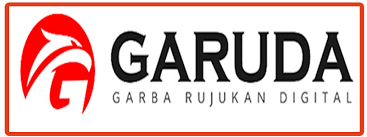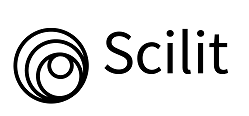PENERAPAN METODE SINGLE EXPONENTIAL SMOOTHING UNTUK PREDIKSI PENGGUNAAN JASA KONSULTAN PAJAK
Application of The Single Exponential Smoothing Method for Prediction of The Use of Tax Consultant Services
DOI:
https://doi.org/10.59896/aqlu.v2i1.27Keywords:
Tax Consultant, Tax, SES, TaxpayerAbstract
This research was conducted based on the low number of tax employees in helping taxpayers carry out their tax obligations. This results in some taxpayers using the services of tax consultants. Taxpayers expect tax consultants to be able to help and solve tax problems that are being pursued by taxpayers. The purpose of this study is to foresee the use of services in the coming month at the tax consultant's office Rahmat Accountax. The method used in this study is a quantitative method. The data is processed in the form of quantitative data in the form of months, years, and the number of people who use services at the Rahmat Accountax office in January 2020-March 2022. This research is to predict the development of service use with the Single Exponential Smoothing (SES) method. The Single Exponential Smoothing method is a method used in short-term forecasting that is usually only 1 month ahead which assumes that the data fluctuates around a fixed mean value without a trend or consistent growth pattern. From the analysis that has been carried out, the author can conclude that the forecasting of service use at Rahmat Accountax has decreased from the previous month, namely as many as 8 clients to 7 clients with α=0,2
References
Clarissa, V., & Mangoting, Y. (2013). Pengaruh Kualitas Jasa Konsultan Pajak terhadap Kepuasan Klien di Surabaya. Tax & Accounting Review, 3(2), 363.
Fauzhi, I. (2014). Pengaruh Kualitas Jasa Konsultan Pajak Dan Pengetahuan Pajak Terhadap Kepatuhan Wajib Pajak (Studi Pada Wajib Pajak Pengguna Jasa Kantor Konsultan Pajak Doni Budiono). Universitas Brawijaya.
Kotler, P., & Keller, K. L. (2009). Manajemen pemasaran. edisi.
Mardiasmo, P., & Perpajakan, A. K. T. (2011). edisi revisi 2011. Yogyakarta: Penerbit Andi.
Muttakin, F., Fatwa, K. N., & Sarbaini, S. (n.d.). Implementasi Additive Ratio Assessment Model untuk Rekomendasi Penerima Manfaat Program Keluarga Harapan. SITEKIN: Jurnal Sains, Teknologi Dan Industri, 19(1), 40–48.
Nazaruddin, N., & Sarbaini, S. (2022). Evaluasi Perubahan Minat Pemilihan Mobil dan Market Share Konsumen di Showroom Pabrikan Honda. Jurnal Teknologi Dan Manajemen Industri Terapan, 1(II), 97–103. DOI: https://doi.org/10.55826/tmit.v1iII.27
Ratna Sari, Y. (2021). TATA CARA PELAPORAN PAJAK PERTAMBAHAN KASUS KLIEN KANTOR KONSULTAN PAJAK ASMADI DAN REKAN PADA KOTA JAMBI. Perpajakan.
Ratnasari, R. T., & Aksa, M. H. (2011). Manajemen Pemasaran Jasa: Teori dan Kasus. Ghalia Indonesia: Bogor.
Sarbaini, S., Cynthia, E. P., & Arifandy, M. I. (2021). Pengelompokan Diabetic Macular Edema Berbasis Citra Retina Mata Menggunakan Fuzzy Learning Vector Quantization (FLVQ). SITEKIN: Jurnal Sains, Teknologi Dan Industri, 19(1), 75–80.
Sarbaini, S., Imran, M., & Karma, A. (2014). Metode Bertipe Steffensen dengan Orde Konvergensi Optimal untuk Menyelesaikan Persamaan Nonlinear. Riau University.
Sarbaini, S., & Safitri, E. (2022). Penerapan Metode Single Exponential Smoothing dalam Memprediksi Jumlah Peserta Pelatihan Masyarakat. Lattice Journal: Journal of Mathematics Education and Applied, 2(2), 103–117. DOI: https://doi.org/10.30983/lattice.v2i2.5937
Sarbaini, S., Saputri, W., & Muttakin, F. (2022). Cluster Analysis Menggunakan Algoritma Fuzzy K-Means Untuk Tingkat Pengangguran Di Provinsi Riau. Jurnal Teknologi Dan Manajemen Industri Terapan, 1(II), 78–84. DOI: https://doi.org/10.55826/tmit.v1iII.30
Supranto, J. (2008). Statistik Teori dan Aplikasi, Jilid I.
UR, D. W. (2019). Teori Organisasi" Struktur dan Desain (Vol. 1). UMMPress.
WALUYO, D., MM, A., & ILYAS, W. B. (2000). Perpajakan Indonesia: Pembahasan Sesuai Dengan Ketentuan Pelaksanaan Perundang-Undangan Perpajakan.
Downloads
Published
How to Cite
Issue
Section
License
Copyright (c) 2024 Sarbaini Sarbaini, Zukrianto Zukrianto

This work is licensed under a Creative Commons Attribution-ShareAlike 4.0 International License.















